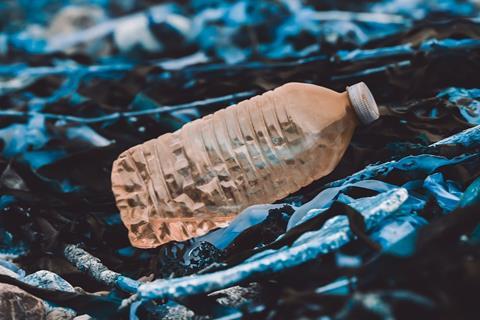Plastic pollution is everywhere, and a good amount of it is composed of polyethylene terephthalate (PET, ♳). This polymer is used to make bottles, containers and even clothing.

Now, researchers report in ACS’s Environmental Science & Technology that they have discovered an enzyme that breaks apart PET in a rather unusual place: microbes living in sewage sludge. The enzyme could be used by wastewater treatment plants to break apart microplastic particles and upcycle plastic waste.
READ MORE: Enzyme-embedded PLA plastic can degrade in home-compost or methanization conditions.
READ MORE: Sea fungus breaks down ocean plastic that has basked in sun’s UV rays
Microplastics are becoming increasingly prevalent in places ranging from remote oceans to inside bodies, so it shouldn’t be a surprise that they appear in wastewater as well. However, the particles are so tiny that they can slip through water treatment purification processes and end up in the effluent that is reintroduced to the environment.
But effluent also contains microorganisms that like to eat those plastic particles, including Comamonas testosteroni — so named because it degrades sterols like testosterone. Other bacterial species, including the common E. coli, have previously been engineered to turn plastic into other useful molecules. However, C. testosteroni naturally chews up polymers, such as those in laundry detergents, and terephthalate, a monomer building block of PET. So, Ludmilla Aristilde and colleagues wanted to see if C. testosteroni could also produce enzymes that degrade the PET polymer.
Favourite shapes
The team incubated a strain of C. testosteroni with PET films and pellets. Although the microbes colonized both shapes, microscopy revealed that the microbes preferred the rougher surface of the pellets, breaking them down to a greater degree than the smooth films.
To better simulate conditions in wastewater environments, the researchers also added acetate, an ion commonly found in wastewater. When acetate was present, the number of bacterial colonies increased considerably.
Though C. testosteroni produced some nano-sized PET particles, it also completely degraded the polymer to its monomers — compounds that C. testosteroni and other environmental microbes can use as a source of carbon to grow and develop, or even convert into other useful molecules, according to the team.
Protein analysis
Next, the researchers used protein analysis to identify the key enzyme that gives this microbe its plastic-eating abilities. Though this new enzyme was distinct from previously described PET-busting enzymes based on its overall protein sequence, it did contain a similar binding pocket that was responsible for PET breakdown.
When the gene encoding for this key enzyme was placed into a microbe that doesn’t naturally degrade PET, the engineered microbe gained the ability to do so, proving the enzyme’s functionality. The researchers say that this work demonstrates C. testosteroni’s utility for upcycling PET and PET-derived carbons, which could help reduce plastic pollution in wastewater.
The authors acknowledge funding from the U.S. National Science Foundation, the U.S. Department of Energy, the Office of Energy Efficiency and Renewable Energy, the Advanced Materials and Manufacturing Technologies Office, and the Bioenergy Technologies Office as part of the BOTTLE Consortium.







No comments yet